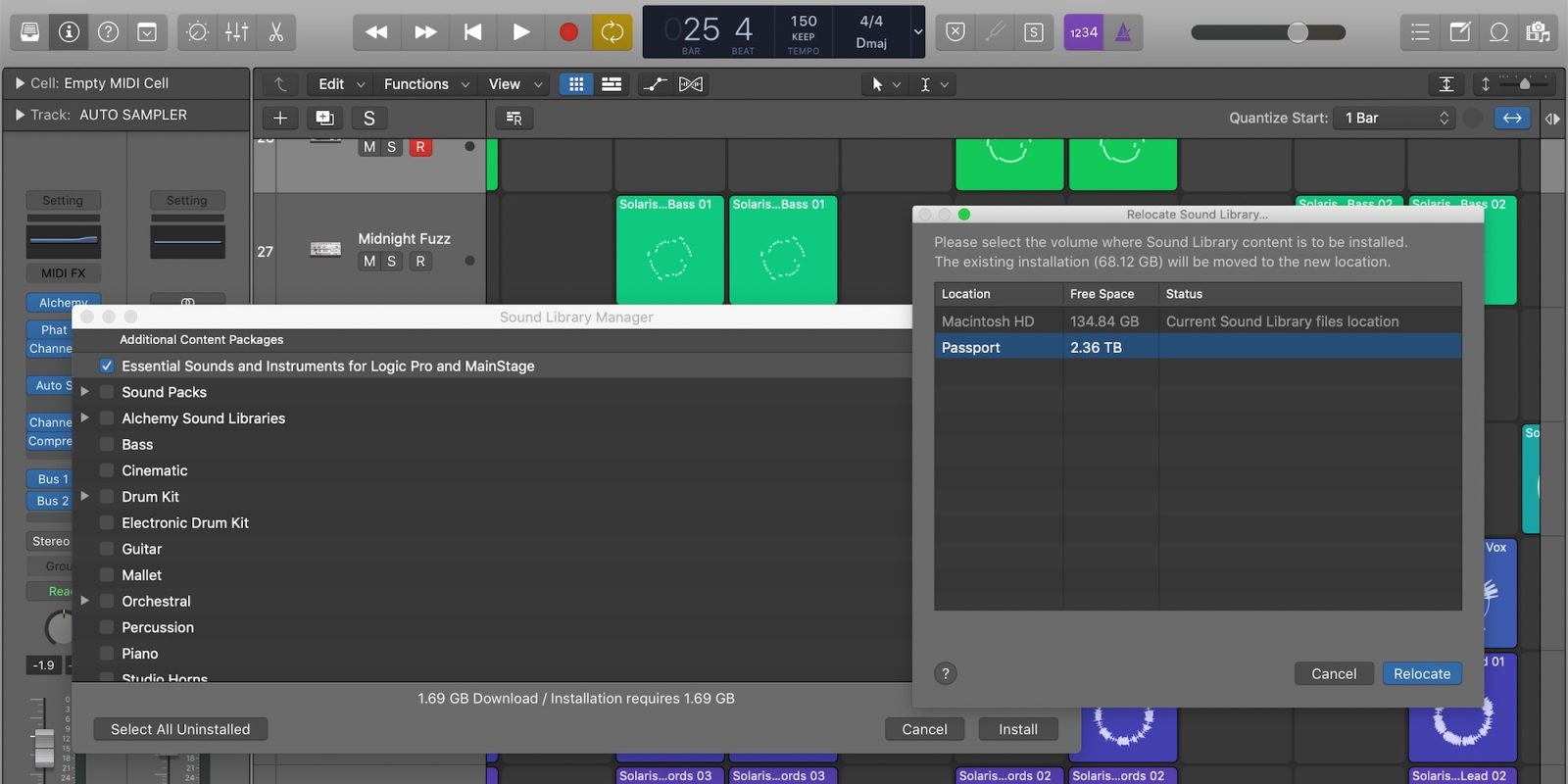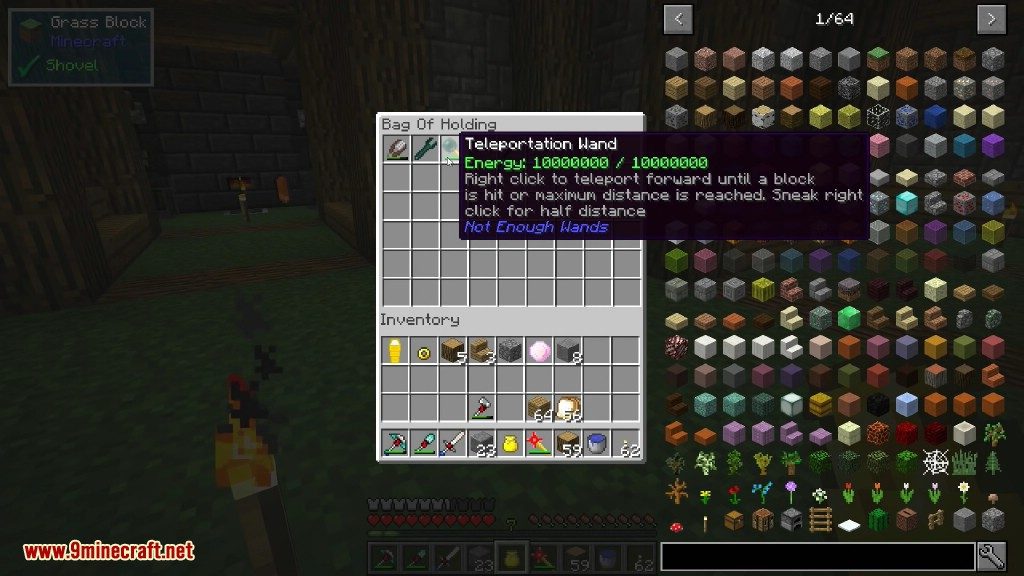Mac Library Logic Folder
VCV Library Instructions. Download and install VCV Rack. Register for a VCV account and log in using Rack’s “Library” menu. Subscribe to a plugin, relaunch Rack, and click “Library Update all” in the menu bar. Adding individual modules will be allowed when Rack v2 is released, since this relies on its module whitelist feature. As of Mac OS X Lion (10.7), the Library folder in your home folder is hidden by default. That doesn’t mean you can’t get to it. It’s hidden so you don’t accidentally delete settings. You can also access the Library folder by opening Spotlight and typing in the path to the Library folder. The path is /Users/name/Library where name is your Mac's username. For most purposes you'll want the user Library described above, but your computer does have two additional Library folders. Cd /Library du -sm. sort -n which will show you the largest directories at the end. Use cd again to drill further done and repeat the du command. PS: Just for reference: My Library folder currently holds about 16 GB of Evernote data, 4 GB Developer docs from Xcode, 1 GB mail and 1.5 GB iOS software updates. Finding the Audio Plugins folder. The plugin folder is nested in the Macintosh HD Library. There are usually a minimum of two Libraries on your Mac, one in Macintosh HD and another in your user account. Search: This Mac “Your Disk Name” When spotlight completes searching ‘This Mac’ click on “You’re Disk Name” and spotlight will search only your external disk. In the main finder window click/selecting a logic project will show the Path at the bottom of the finder window.
It depends which samples you are referring to:
All the audio samples based on the EXS24 Sample (including the Drum Kit Designer Samples) are stored in the 'EXS Factory Samples' folder and the ones based on the Ultrabeat instrument are stored n the 'Ultrabeat Samples' folder.
These are all the Logic factory samples stored in the system directory.
All the user created samples are stored in the user directory ~/Music/ Audio Music Apps/

Audio FIles for the Apple Loops are stored in a different location /Library/Audio/
Hope that helps
Edgar Rothermich
'I may receive some form of compensation, financial or otherwise, from my recommendation or link.'
Apr 29, 2015 8:26 AM
The Library directories are where the system and your code store all of their related data and resources. In macOS, this directory can contain many different subdirectories, most of which are created automatically by the system. In iOS, the app installer creates only a few subdirectories in ~/Library (such as Caches and Preferences) and your app is responsible for creating all others.
Table A-1 lists some of the common subdirectories you might find in a Library directory in macOS along with the types of files that belong there. You should always use these directories for their intended purposes. For information about the directories your app should be using the most, see The Library Directory Stores App-Specific Files.
Subdirectory | Directory contents |
|---|---|
| Contains all app-specific data and support files. These are the files that your app creates and manages on behalf of the user and can include files that contain user data. By convention, all of these items should be put in a subdirectory whose name matches the bundle identifier of the app. For example, if your app is named MyApp and has the bundle identifier Resources required by the app to run must be placed inside the app bundle itself. |
| Contains programs that assist users in configuration or other tasks. |
| Contains audio plug-ins, loops, and device drivers. |
| Contains app-specific autosave data. |
| Contains cached data that can be regenerated as needed. Apps should never rely on the existence of cache files. Cache files should be placed in a directory whose name matches the bundle identifier of the app. By convention, apps should store cache files in a subdirectory whose name matches the bundle identifier of the app. For example, if your app is named MyApp and has the bundle identifier |
| Contains resources for picking colors according to a certain model, such as the HLS (Hue Angle, Saturation, Lightness) picker or RGB picker. |
| Contains ColorSync profiles and scripts. |
| Contains system bundles and extensions. |
| Contains the home directories for any sandboxed apps. (Available in the user domain only.) |
| Contains plug-ins for extending system-level contextual menus. |
| Contains data files with web browser cookies. |
Download monster hunter portable 3rd psp patch ita. | Contains data used by Xcode and other developer tools. |
| Contains language dictionaries for the spell checker. |
| Contains documentation files and Apple Help packages intended for the users and administrators of the computer. (Apple Help packages are located in the |
| Contains device drivers and other kernel extensions. |
| Contains aliases to frequently accessed folders, files, or websites. (Available in the user domain only.) |
| Contains font files for both display and printing. |
| Contains frameworks and shared libraries. The |
| Contains plug-ins, libraries, and filters for web-browser content. |
| Contains keyboard definitions. |
| Specifies the agent apps to launch and run for the current user. |
| Specifies the daemons to launch and run as root on the system. |
Omnisphere 2. 5 update free download. | Contains log files for the console and specific system services. Users can also view these logs using the Console app. |
| Contains the user’s mailboxes. (Available in the user domain only.) |
| Contains plug-ins for the System Preferences app. Developers should install their custom preference panes in the local domain. |
| Contains the user’s preferences. You should never create files in this directory yourself. To get or set preference values, you should always use the |
| In the system and local domains, this directory contains print drivers, PPD plug-ins, and libraries needed to configure printers. In the user domain, this directory contains the user’s available printer configurations. |
| Contains QuickLook plug-ins. If your app defines a QuickLook plug-in for viewing custom document types, install it in this directory (user or local domains only). |
| Contains QuickTime components and extensions. |
| Contains screen saver definitions. See Screen Saver Framework Reference for a description of the interfaces used to create screen saver plug-ins. |
| Contains scripts and scripting resources that extend the capabilities of AppleScript. |
| Contains system alert sounds. |
| (Deprecated) Contains system and third-party scripts and programs to be run at boot time. (See Daemons and Services Programming Guide for more information about starting up processes at boot time.) |
| Contains web server content. This directory contains the CGI scripts and webpages to be served. (Available in the local domain only.) |
Mac Library Logic Folders

Mac Library Logic Folder Template
Copyright © 2018 Apple Inc. All Rights Reserved. Terms of Use Privacy Policy Updated: 2018-04-09